Resources
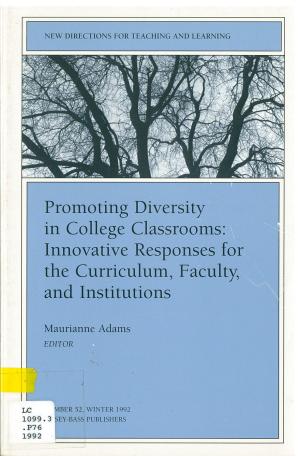
Journal Issue. This journal presents a collection a essays that offer several new perspectives on teaching practice; give descriptive and narrative accounts of curricular and teaching innovations; and discusses a range of shared learnings obtained from public university, community college, and private college multicultural change processes. (From the Publisher)
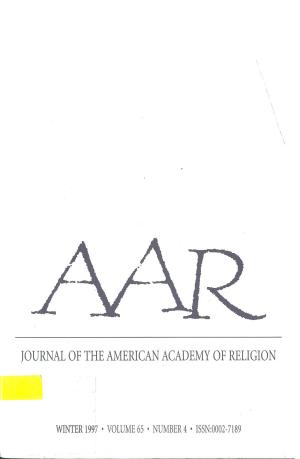
Journal Issue.
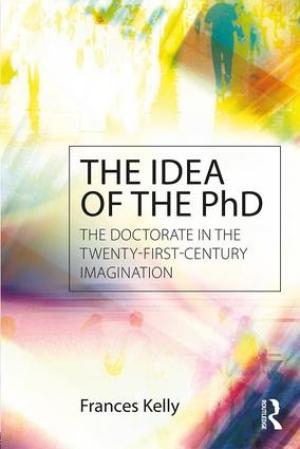
Understanding the concept, contours, and concerns of Doctor of Philosophy (PhD) studies is the central focus of this book. It explores the world of PhD as it is imagined, experienced, and analyzed in various academic contexts. It unearths the relationship between the PhD of the past and of the present, and argues that there is a tension at the core of the idea of PhD in its twenty-first century understanding. Is the PhD undergoing a radical transformation? Where is it heading? In exploring and responding to these questions, the author, Frances Kelly of the Faculty of Education at the University of Auckland, initiates a needed conversation within higher education. The book consists of four chapters, each examining an aspect of the subject matter in focus: the nature of doctoral research, the idea of the doctoral researcher, PhD pedagogy, and the spaces of doctoral research. The introduction outlines the rationale and agenda of the book and briefly reflects on the themes of the PhD and university in general as they relate to culture, images, and stories. The author also claims the book is about critical analysis of contemporary discourse on the PhD. Chapter 1 reflects on doctoral writing and with the help of illustrations and case studies argues for understanding the process of dissertation writing as work. This is a helpful perspective for graduate students working on or preparing for their dissertation writing. The second chapter explores the person, character, and identity of a “knowledge worker” and highlights five key attributes of the doctoral researcher: (1) specialist knowledge, (2) effective communication, (3) general intellectual skills and capacities, (4) independence, creativity, and learning, and (5) ethical and social understanding (45-46). This chapter contributes an important conversation on the struggle of the researcher in the context of university and society about his or her contribution as a doctoral researcher. Chapter 3 examines the nature and function of doctoral pedagogy in terms of supervision, socialization, and issues of gender, power roles, and their impacts. It begins with the study of the traditional pedagogical practice of private and dyadic supervision and proceeds with the ideas of doctoral pedagogy in groups and voices for the later. The fourth and final chapter takes up the discourse on the spatial realities of doctoral learning, which includes the university campus, the location and design of that campus, library and archives, the writing desk, and the imagined space (location) of the researcher. The significance of each of these in doctoral research are explored within a context of cultural imagination. In her conclusion, Kelly says that the cultural imagery of the PhD is tied to a Western idea and wonders about the nature of non-Western ideas of the PhD. The book is rich in illustrations from a variety of researchers and their experiences with the PhD. However, it does not define or explore the concepts of imagination – Western or non-Western – or social and cultural domains, thus taking them for granted. Some contents of the book may disappoint the experts in the field. Yet it will make a helpful tool, especially for the emerging scholars of higher education.

“Learning in the 21st century has drastically changed how learners access and process information” (1). The authors of Best Practices in Engaging Online Learners begin by describing specific changes in higher education that directly impact student learning. This change is obvious. Several technologies are changing the landscape of higher education: electronic textbooks, learning management systems, large-scale institutional data, social media – each of these changes impacts student experience, and benefit from intentional pedagogical usage. These changes are more thorough in distance learning than in face-to-face contexts it seems. The authors present an idealistic call towards engaging and developing rigorous online education that harnesses its possibilities. As such, they advocate active and experiential learning that is high on transfer and reflection. To a certain extent, this book seems to be incorrectly titled. Calling itself Best Practices in Engaging Online Learners leaves the reader with the expectation that the book contains examples of best practices. What the book does in actuality is to categorize several trends in pedagogy and in the scholarship of teaching and learning research. The focus is almost entirely theoretical. The book surveys experiential learning (13-33), project-based learning (36-39), scenario-based learning (39-43), gamification (47-57), cooperative learning (61-71), and assessment strategies (73-89). The summaries of these areas of pedagogy research are accurate and centralize much of the current research, but the most essential questions remain: how does an instructor take the content they need to present and make it engaging for students? How do instructors engage students in the learning process? What specific strategies empower students to have a higher degree of retention and transportability of what they have learned? On these questions, theory only gets us so far. Having said this, the volume has some utility, particularly in that it provides an efficient summary of various mainline innovations in pedagogy research. For this reason, it would be valuable for an instructor new to teaching, or one looking to start making progress towards learning-centered instruction. It also might be worth discussing in a faculty learning community – provided that more seasoned instructors can flesh out the theory with examples from their teaching. The utility of this volume dramatically decreases for the seasoned teacher who has done reading or research into effective teaching practices.
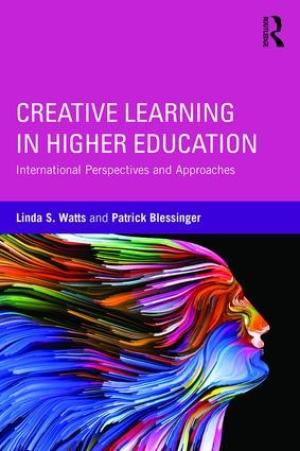
Creativity in higher education is oftentimes pigeonholed to certain academic disciplines or perceived as the property of select individuals with an artistic flair. Watts and Blessinger, through their well-crafted anthology, demythologize these and other constructs, by providing readers with a more comprehensive understanding of creativity as an accessible and proactive agent in higher education – past, present, and future According to Watts and Blessinger, “creative learning transcends individual capacities, disciplinary constraints, national boundaries, and institutional barriers” (217). Nonetheless, they also caution against assuming that it can be understood or practiced the same across cultures. Creativity in the classroom demands particularistic pedagogic approaches that reflect the institutional and cultural settings of those served (xvi). With a primary focus on higher education, the assembled chapter authors reflect different international and interdisciplinary perspectives and bring teaching techniques based on extensive research and experience. A central theme found throughout this book is that “If all students possess the potential for creativity, then teachers do well to consider how their instructional objectives, curricular designs, learning assessments, and institutional structures reflect that fact” (214). Within this anthology, the reader is provided with case studies and essays that cover a full range of subject content and pedagogic approaches in varied cultural settings – including “Play and 3D Enquiry for Stimulating Learning,” “A Case Study in Best Practices in Public Higher Learning,” “Creative Approaches to Stimulate Classroom Discussions,” and “Configuring Interdisciplinarity: The Common Core at the University of Hong Kong.” As a book, it exhibits a dynamic interplay between convention and innovation and reminds the reader throughout how creativity is deeply rooted in the pedagogic theory of all disciplines. It also challenges educators to “foster a climate and culture in which creative learning and teaching are promoted, supported, and valued; a culture that allows experimentation, new ideas, even failure – for what is failure if not an opportunity to learn?” (199). This book would be a useful resource for any educator regardless of their respective discipline. It helps us to remember that “learning creativity happens when inventive, imaginative, and physical methods are used to explore a subject and harness its practices to new partners” (120). And although the reader may not find each chapter as pertinent as the next, they are given access throughout to seminal texts and issues relating to creativity in higher education. The mantra of this book is – creativity is an activity in which anyone may engage in.
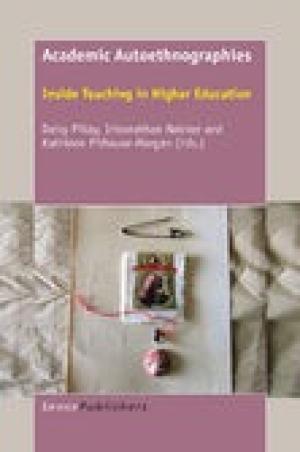
The editors of this book are based in a School of Education at a South African university where they teach and research in the academic specializations of Teacher Development Studies (Daisy and Kathleen) and Educational Leadership and Management (Inbanathan) (2). There are thirteen chapters that identify how each utilizes autoethnography within South African higher education. Each author discusses their personal and/or professional narrative of lived experiences as a doctoral student, researcher, or educator within South African higher education. Even though the book is written from a South African higher education viewpoint, the strength of the book is its usefulness to academics who are interested in learning how to be self-reflective, find their authentic voice, and use creative measures (photos, poems, storyboards, exhibitions, journals, metaphor drawings, and so forth) to share their experiences to a wider community within and outside of academia. The book invites readers to experience autoethnographic research as a challenging, complex, and potentially transformative methodology for facilitating sociocultural understandings of academic selves and of teaching in higher education (14). Within the book, autoethnography is defined in multiple ways by different practitioners. However, one key definition is “autoethnography has potential to deepen and extend our understandings of lived educational experiences through the articulation and acknowledgment of how selves are sociocultural, political, and historical (14).” Each chapter’s author focuses on a lived educational experience for which they use autoethnography as their method of self-reflexive research. Liz Harrison (chapter 2) sought to write an authoethnography “that is ethnographic in its methodological orientation, cultural in its interpretive orientation, and autobiographical in its content orientation” (Chang 2008, 48). She focuses on how she came to give weight to her voice and the opportunities afforded her to speak for change within higher education. Lasse Reinikainen and Helene Zetterstrom Dahlqvist (chapter 5) focus on how as teachers and researchers there is a challenge to find ways to teach about issues connected to complex and abstract societal structures, especially if teachers want students to understand and make connections to their own individual experiences (70). They used the art of curating an exhibit as a form of self-reflexivity and writing about the ethical issues of the process. They explore the thought-provoking question – “Is there social change in you?” Their emphasis is on the vulnerability of teachers moving from private (personal) to public (shared) experiences with their students. The remainder of the book is equally valuable for educators implementing autoethnography using visual art (poems, exhibits, storyboards, photography, family history, and so forth). The book accomplishes much in the short space of thirteen well-structured chapters. It is an important resource for those seeking to use autoethnography to improve their teaching.
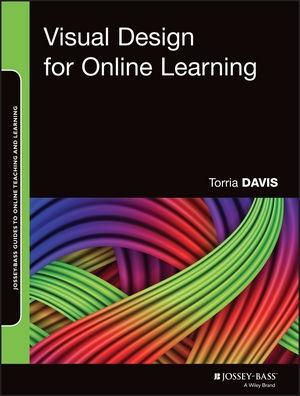
Anyone who has developed an online course knows how important the design of the course is. Poorly designed courses make the course navigation difficult, causing unnecessary frustration and limiting the ability of students to achieve learning outcomes. The author of this book understands these difficulties. Drawing upon her own negative experiences with initial online offerings, she provides readers with important lessons on designing effective online experiences for both teachers and students. Davis suggests, rightly, that the reader should use the text like a workbook, drawing from the ideas presented in the text as the reader creates her/his own course in the platform the reader uses. She encourages readers to draw upon the backward course design model: begin with learning objectives, discern appropriate ways to assess those objectives, and then generate online learning activities that will enable success in the course. Such alignment will promote student success. The author provides an acronym, L.I.T.E., for the design framework she encourages. Readers should be sure to create clickable links to external content (L), integrate well the multimedia included (I), use typography and white space to enhance the legibility of the course (T), and embed the content at the point of need (E). She identifies four types of content pages that should be part of the design: landing page, navigation page, instructional page, and assignment submission page. Of course, most learning platforms will provide these. The key, she contends, is to create them in a way that achieves the course objectives and is user-friendly for the student. The remainder of the chapters illustrate how readers can develop the various components of a good online course, including images and videos, integrating multimedia, facilitating instruction and interaction, and the all-important assessment. Davis provides helpful hints regarding the tools included in software such as PowerPoint, like using it to download and edit images or to incorporate online media. She also points to a number of free online tools one can use to develop a course, such as the presentation tool Brainshark, and the interaction tool VoiceThread. At the same time, she cautions users not to incorporate too many technologies into the course. The focus should be on learning the content of the course, not on overwhelming students with too many technologies. As with any text, there are some limitations. Parts of the book require knowledge of html language. Many faculty do not know html language because they use software to develop their courses that does this automatically. In addition, for a book that emphasizes visual design, many of the illustrations are difficult to read, leaving the reader to wonder how well the text follows its own advice on legibility. Yet over all, the text is a useful step-by-step guide for developing an online course or for improving the visual design of existing courses.
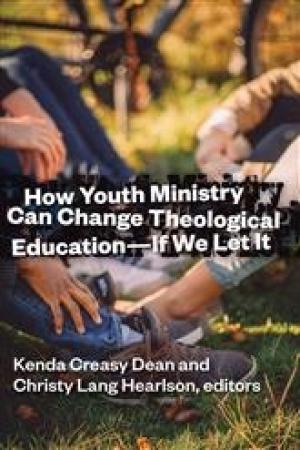
Acutely aware of the North American religious landscape, the editors introduce the volume by noting two ironies – a vast majority of young people subscribe to a superficial understanding of self, God, and the world, and those who are more complexly informed are often mistakenly considered by youth ministries to be “already won” (8). With this awareness, the editors bring together a diverse set of essays that intentionally make an effort to overcome this irony. By making critical references to High School Theology Programs, the different authors weigh in on the matter by treating high school students as full persons who desire and invite serious mentorship, challenge conventionally held notions, and are ready to hit the spiritual formation ball out of the park. Several authors highlight how young people are often liturgically formed by dominant social conventions that impact their behavior and their ability to articulate the meaning of self and world. If young people are thus culturally tutored, how can those in youth ministry enable a different way of theologically framing lived experiences? How can they creatively disrupt unhelpful naming systems, for example, that young people are enculturated into in such a way that naming the issue could become a means to rethink and rename ways of being in the world? What would this take and what would it cost? Each author presents arguments and perspectival interventions that are based on hard evidence and long-term work with high school students. Work with youth, in the end, affects youth and those who work with them. The book argues that such giving and receiving offers grounds for holy friendship and mutual companionship that can and will positively change self and world. Faculty members in theological schools are encouraged to actively seek out for themselves and others opportunities to teach age groups that they may not otherwise readily engage. No age is “too young.” While the difficulty of the task is not underestimated, the rewards, the authors argue, are many. Church workers are called to focus not so much on saving churches but rather on “saving lives” (275). Both may eventually be saved in the process. The subtitle “If We Let It” captures the philosophical framework of this book. Readers interested in learning how youth ministry can change theological education – if we let it – will learn a great deal from this work that serves as a well-researched handbook, an indictment of theological malnourishment, and a mirror that poses hard and important questions to those interested in more than a cosmetic makeover of theological education today.
Preparatory Documents Graduate Program Teaching Initiative Summative Conference Preparatory Documents Each program prepared two documents that were distributed electronically prior to the conference. Document 1: Teaching Preparation in your Doctoral Program Prepare a brief summary of the teaching preparation aspects of your doctoral program so other institutions can have a good understanding of how it is structured, who is involved, and the various stages the doctoral students go through. This should involve things such as its place in the student's program, how much teaching is involved, how the supervision is structured, whether there is a teaching colloquy or class, how the faculty are trained or oriented, etc. This document should be no longer than 2 pages. Document 2: Summary of Findings from Teaching Initiative Work Prepare a brief summary of your findings from the work of the Teaching Initiative. A refined version of no. 6 in the school's final report can be used for this. Again, this needs to give other institutions a good understanding of what was learned from the visiting alumni/ae as strengths and weaknesses of your program and what steps you have taken or are projecting taking to amend or improve your program. The 2 documents submitted by each program have been combined into a single document. Click on the school name to open and download the pdf from each of the participating programs. 1. Baylor University Documents (pdf) 2. Boston University School of Theology Documents (pdf) 3. Dallas Theological Seminary Documents (pdf) 4.DU/Iliff School of Theology (pdf) 5. Emory University/Candler School of Theology (pdf) 6. Graduate Theological Union (pdf) 7. Jewish Theological Seminary (pdf) 8. Loyola University Chicago (pdf) 9. Marquette University (pdf) 10. McGill University (pdf) 11. McMaster University (pdf) 12. Princeton Theological Seminary (pdf) 13. Southern Methodist University (pdf) 14. Southwestern Baptist Theological Seminary (pdf) 15. Syracuse University (pdf) 16. University of Notre Dame (pdf) A single pdf of all above documents ( 63 pages) The Summative Conference gathered representatives from 16 doctoral programs that received a grant in 2011 from the Wabash Center to meet with recently graduate doctoral students for structured feedback and conversation on their preparation by the doctoral program for their careers as teachers. More information on the Wabash Center's Graduate Program Teaching Initiative (GPTI)
Wabash Center Educating Clergy Conference Chicago O’Hare Hilton Winter-Spring 2006 Questions for the Conference • Composition and Socialization of Faculty: Where will the faculty you envision come from? How do you bring new faculty into the teaching/learning culture? How are faculty formed as teachers? • Teaching Cultures: Do theological schools have a distinctive pedagogical culture? Are there variations among different types of schools? • Learning Cultures: How does school culture inside and outside the classroom contribute to learning and clergy formation? • Effectiveness: Why—despite “good” teaching—do religious communities and graduates complain about clergy preparation? SCHEDULEDAY 1 12:00 noon Buffet lunch 1:00 pm Session I - Introduction and Research Overview 2:40 pm Break 3:00 pm Session II - From the Beginning: Composition Socialization of Theological and Rabbinical Faculties 4:40 pm Break 5:00 pm Session III - Teaching Cultures 6:30 pm Break 6:45 pm Reception 7:15 pm Dinner SCHEDULE DAY 2 9:00 am Session IV - Learning Cultures 10:30 am Break (checkout) 11:00 am Session V - Is Clergy Education Good Enough? 12:15 pm Lunch 1:15 pm Session VI - Take The Resources—and Run! (Break) 3:15 pm Concluding remarks and feedback 3:30 pm Departure
Wabash Center Staff Contact
Sarah Farmer, Ph.D
Associate Director
Wabash Center
farmers@wabash.edu